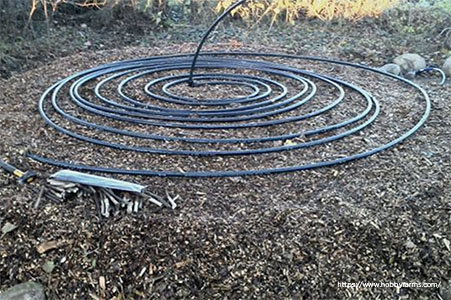Compost Bioreactor Design

1. Students will research the science of composting and proper maintenance methods to build their own bioreactor. 2. Students will research the proper composition of compost for maximum heat production. 3. Students will transfer the thermal energy in compost to a container of water heat water with by placing a vessel in the middle of the active compost/bioreactor.
Solar energy is available when the sun shines but energy can be supplemented at night by the release of energy during the composting of organic waste. In this activity, we will experiment with the feasibility of harnessing thermal energy to heat water with a bioreactor. Students will experiment with using compost buckets as bioreactors, first experimenting to increase temperature yield of the compost and then using that generated thermal energy to heat water. This lesson is a prep lesson towards the ultimate goal of designing a system that uses compost and a heat exchanger to keep water from freezing over during the winter. To increase temperature yield, students will examine the effects of different types of “fuel,” or organic waste, for their bioreactor.
